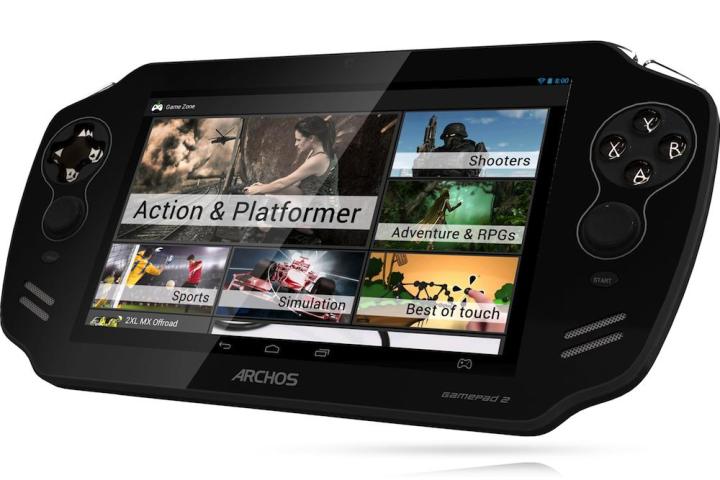
Archos is slowly releasing the hardware it teased just before the IFA 2013 tech show in September. Having subsequently shown the new Platinum Android tablet range, it has now revealed the Gamepad 2 tablet. The device leaked at the end of last month, giving us a clue as to its features, but now we’ve got all the details and the final price of Archos’ second attempt at a dedicated gaming tablet.
According to Archos, the Gamepad 2 is, “Designed for gaming,” and like the first it has a wealth of physical controls surrounding the screen. There are dual thumb sticks, which are billed as being more precise than those on its predecessor, plus a d-pad, a pair of buttons on each shoulder, and six other individual buttons on the front panel. All the buttons can be individually mapped as an alternative to touchscreen controls, but the tablet also uses Google’s own button mapping SDK, so it should be compatible with many titles already. Two such games are included with the tablet, Asphalt 8 Airborne, and Modern Combat 4: Zero Hour.

Like the new Platinum tablets, the Gamepad 2 runs Android 4.2 Jelly Bean, and Archos has left it as Google intended, so there’s no messing around with custom user interfaces. Other features include dual stereo speakers, dual-band Wi-Fi, and a video call camera.
The Gamepad 2 will be going on sale in the UK at the end of October, and is expected to cost from £180, while the U.S. release will come before the end of the year at a starting price of $200.
Editors' Recommendations
- The best tablets in 2024: top 11 tablets you can buy now
- How to get Fortnite on your Android phone or tablet
- I used AR glasses with Android tablets and iPads. Only one was good
- The best game controllers for Android phones and tablets in 2022
- The Samsung Galaxy Tab S4, the best Android tablet in the game, is now $152 off


